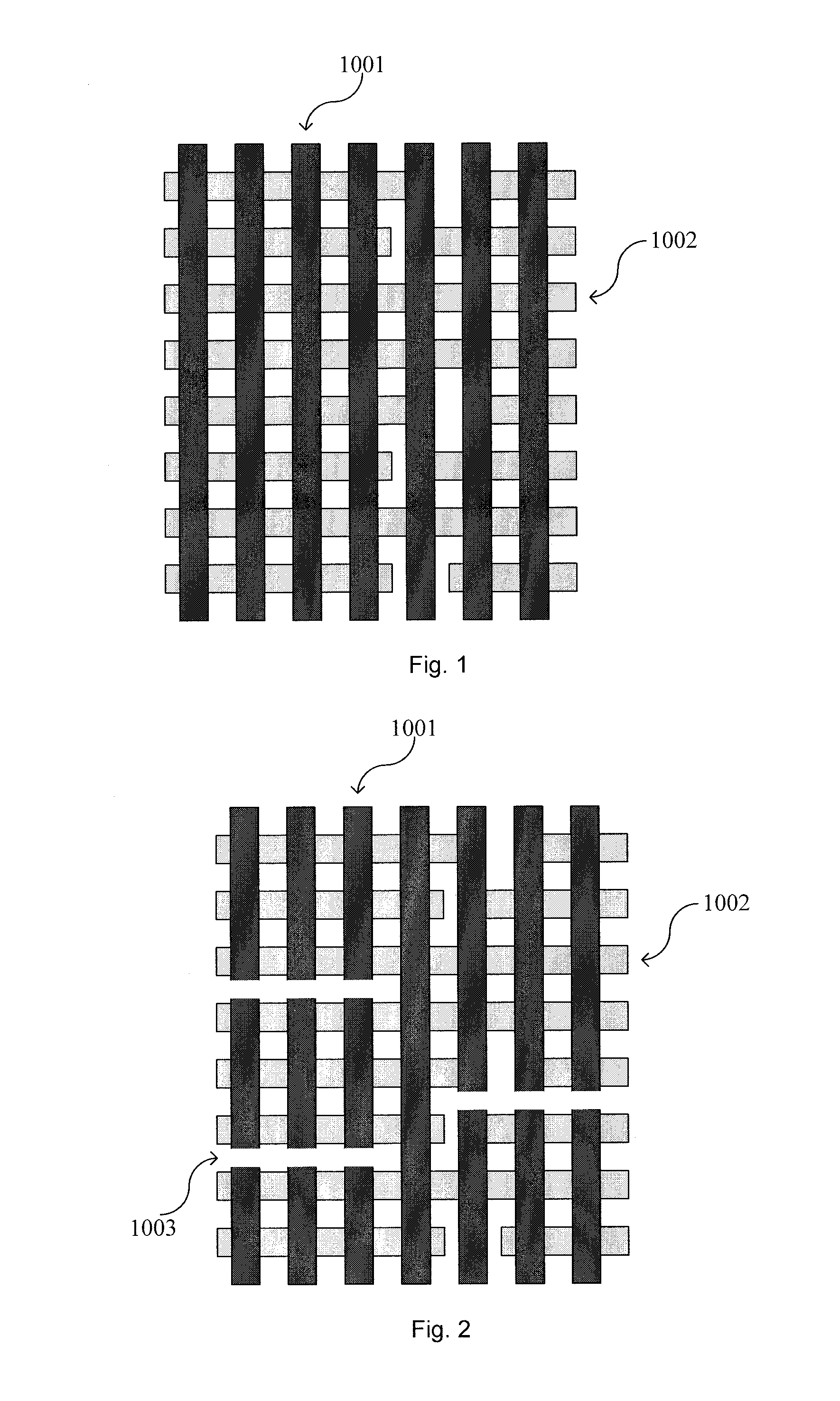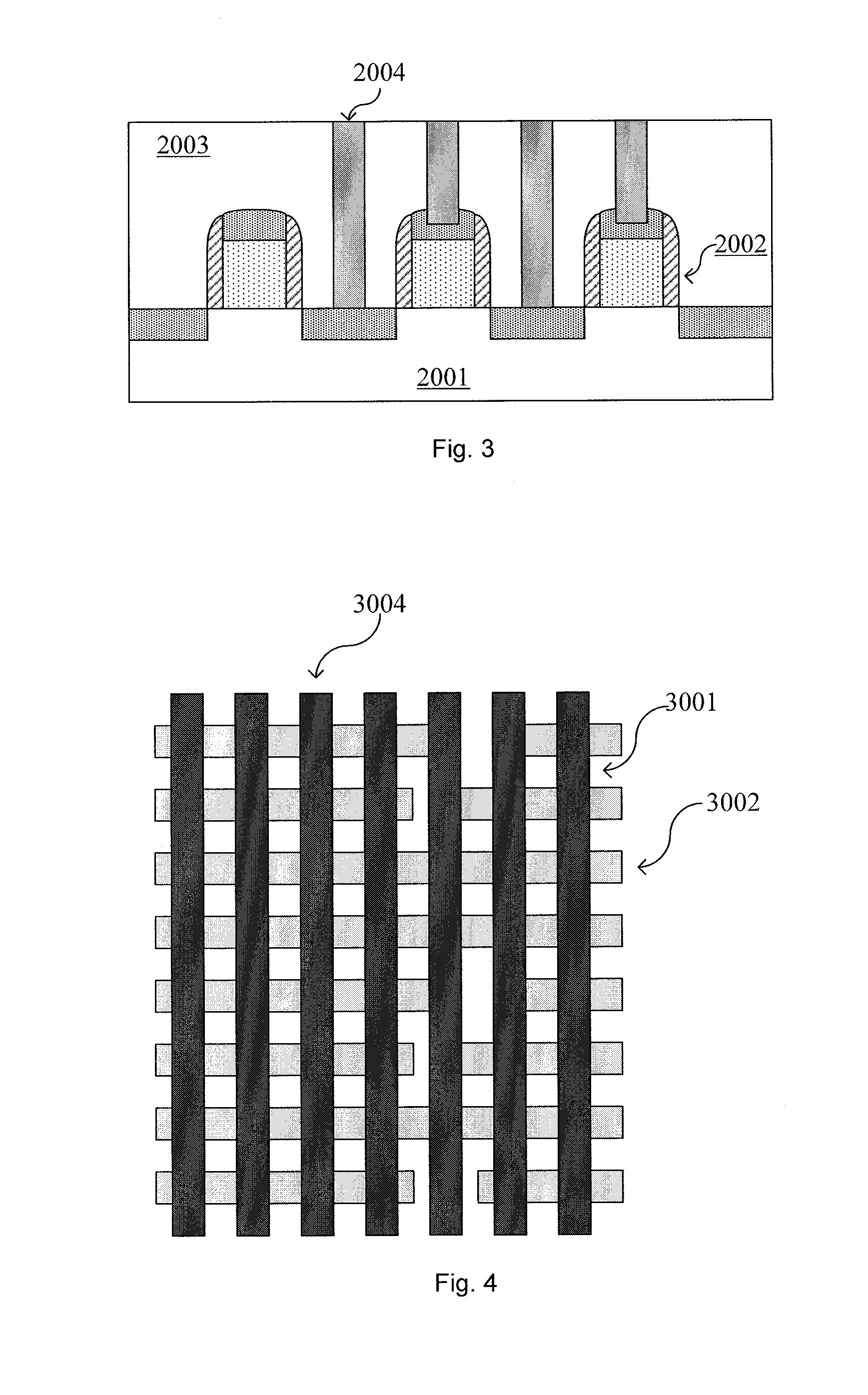Semiconductor device structure and method for fabricating the same
a technology of semiconductor devices and semiconductors, applied in the field of semiconductor devices, can solve the problems of serious distortion of images formed on wafers, approaching the theoretical limit of photolithography systems, and the scale of integrated circuits (ics), and achieve the effect of simplifying the formation of contacts
- Summary
- Abstract
- Description
- Claims
- Application Information
AI Technical Summary
Benefits of technology
Problems solved by technology
Method used
Image
Examples
first embodiment
A First Embodiment
[0033]Hereinafter, a first embodiment of the present invention is described with reference to FIGS. 4-10.
[0034]FIG. 4 shows a part of a layout formed on a semiconductor substrate. Here, the semiconductor substrate may comprise any suitable semiconductor substrate materials, for example, but not limited to, Si, Ge, SiGe, SOI (Silicon on Insulator), SiC, GaAs, or any III-V group compound semiconductor, etc. According to known design requirements (for example, for a p-type substrate or an n-type substrate) in the prior art, the semiconductor substrate 1000 may comprise various doping configurations. Further, the semiconductor substrate 1000 may optionally comprise an epitaxial layer which may be manipulated by stress for performance enhancement.
[0035]In the semiconductor substrate, Shallow Trench Isolations (STIs) 3001 have already been formed, and active regions 3002 are formed in the areas surrounded by STI structures 3001. For of convenience, FIG. 4 only shows stri...
second embodiment
A Second Embodiment
[0057]The method according to the present invention is also compatible with the replacement gate process. Hereinafter, a second embodiment of the present invention is described with reference to FIGS. 11-15, where the replacement gate process in incorporated in this embodiment. The second embodiment differs from the first embodiment mainly in that: a replacement gate process is conducted after the source / drain regions are formed. Specifically, dummy gate lines are firstly formed and then are replaced with replacement gate lines. The same or similar reference numbers in the drawings and in the first embodiment denote corresponding parts.
[0058]In the following, emphasis is given to the differences of the second embodiment from the first embodiment and description of the same processes is omitted. Like reference numbers denote like parts throughout the drawings.
[0059]As shown in FIG. 11(a), dummy gate lines 3005 are formed by printing a pattern of parallel gate lines...
PUM
| Property | Measurement | Unit |
|---|---|---|
| distance | aaaaa | aaaaa |
| thickness | aaaaa | aaaaa |
| conductive | aaaaa | aaaaa |
Abstract
Description
Claims
Application Information
 Login to View More
Login to View More - R&D
- Intellectual Property
- Life Sciences
- Materials
- Tech Scout
- Unparalleled Data Quality
- Higher Quality Content
- 60% Fewer Hallucinations
Browse by: Latest US Patents, China's latest patents, Technical Efficacy Thesaurus, Application Domain, Technology Topic, Popular Technical Reports.
© 2025 PatSnap. All rights reserved.Legal|Privacy policy|Modern Slavery Act Transparency Statement|Sitemap|About US| Contact US: help@patsnap.com



